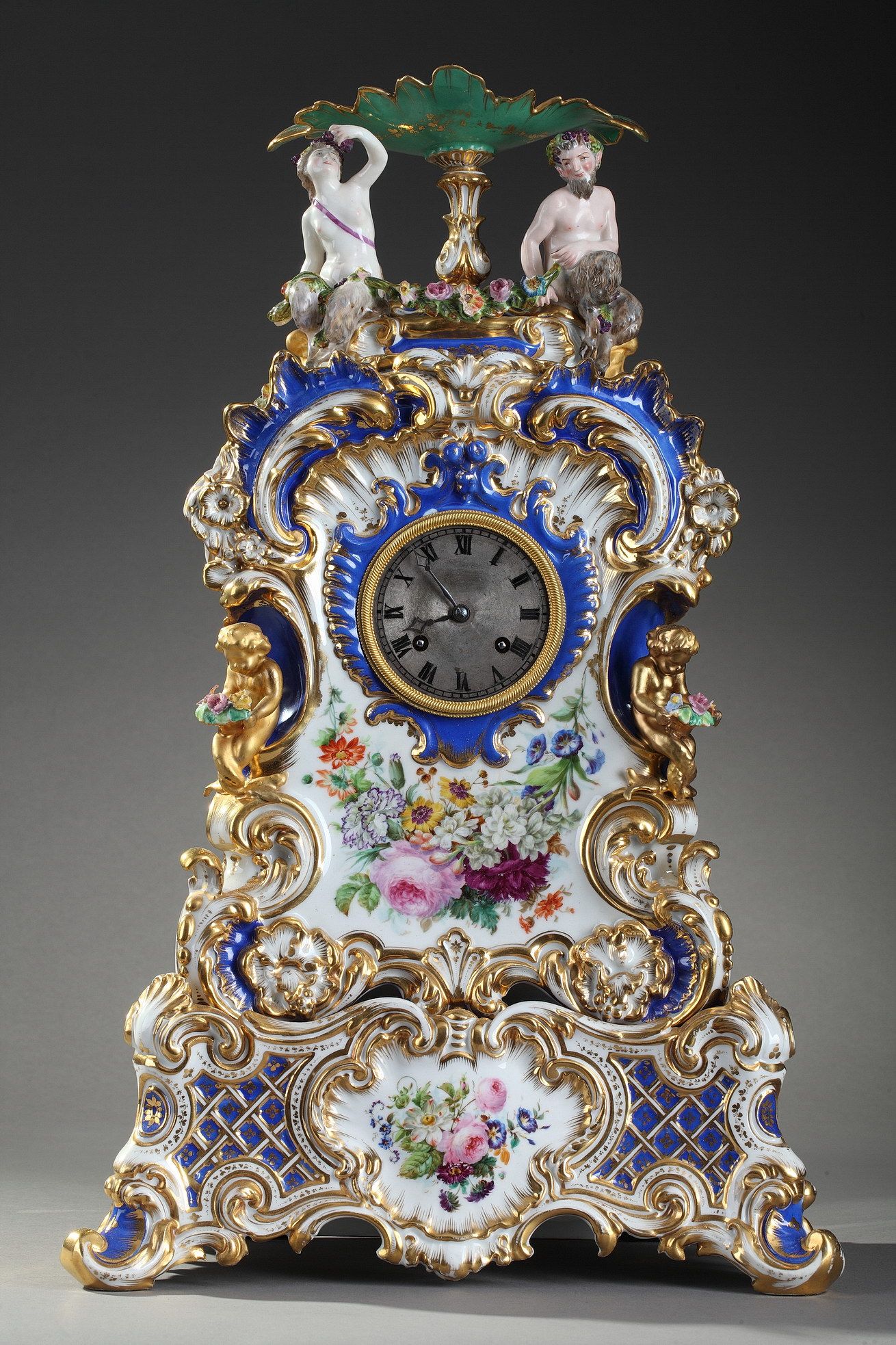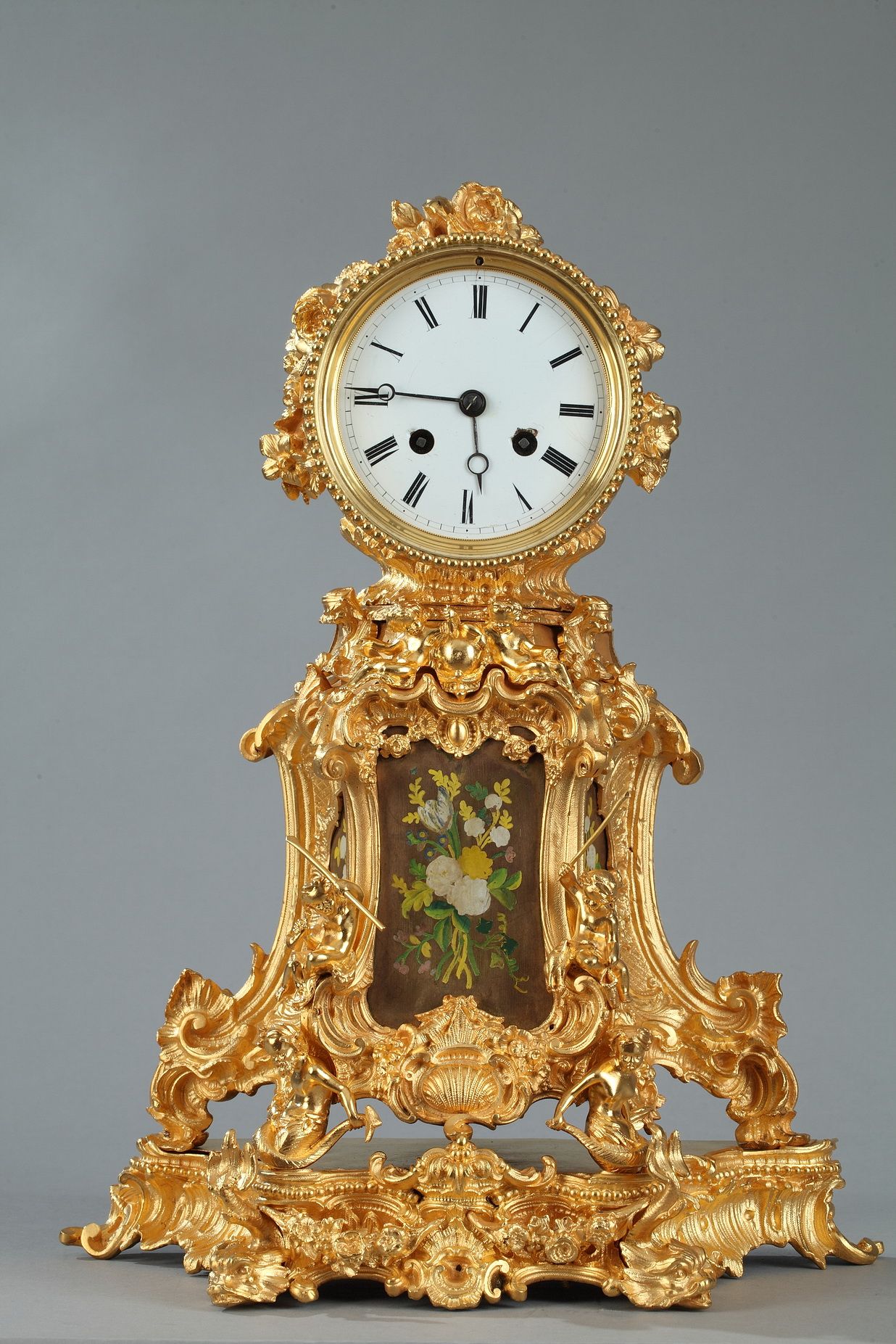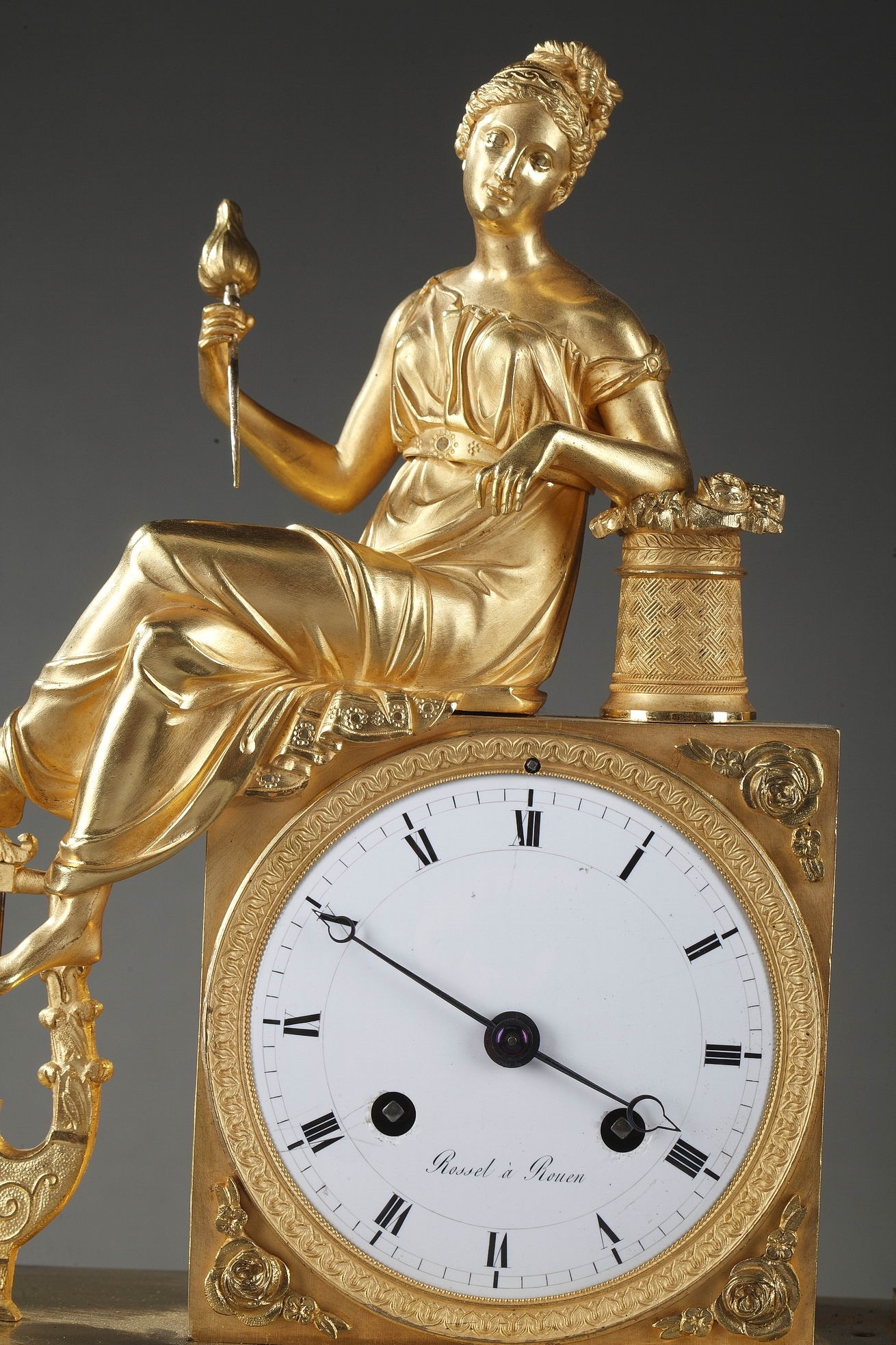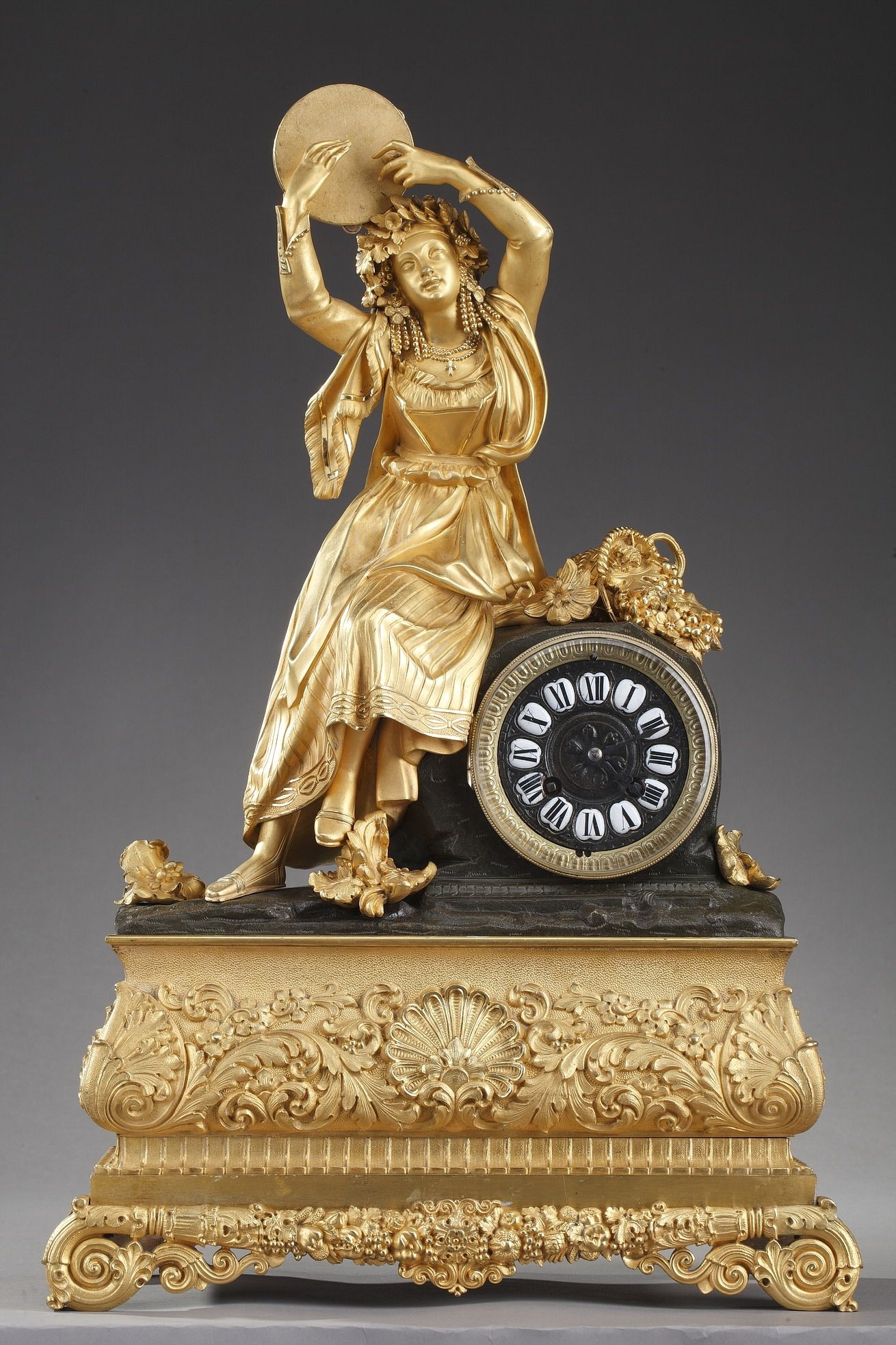The French clock
04.05.12
From the late 18th century onwards, artists rebelled against classical rigidity and the cult of ideal beauty, expressing their preference for more realistic subjects, closer to their own time. This new style, exalting emotion, sensitivity, imagination, and the fantastic, is also evident in Romantic-era clocks.
THE BRONZE DECOR
During the Restoration , bronze workers took a prominent place in the art of watchmaking . They virtuously translated anecdotal scenes, episodes of daily life, Gothic architecture and exotic scenes.
The 1830s marked an evolution in the ornamental grammar of clocks. Devoid of figures, they were decorated with more or less antique motifs such as cornucopias, palmette friezes, finely chiseled garlands framing the gilt bronze movement or flower baskets, a characteristic motif of the Restoration.
During the reign of Louis-Philippe , these decorative motifs became more elaborate, more abundant, and of a bolder chiseling.
Rococo clock with floral motif decoration
THE VOGUE OF SUBJECT-BASED CLOCKS
Subject clocks became very popular with a new, primarily bourgeois clientele. Neoclassicism, which continued under the Empire and the Restoration, provided scenes and characters drawn from mythology and ancient history.
Present on Louis XVI clocks, they were revived during the first thirty years of the 19th century. Among the most common were Apollo and Diana the huntress, most often copied from ancient Greco-Roman figures, Orpheus, Mercury, Adonis, Chronos accompanied by bas-reliefs copied from Greek vases, but also and especially Venus and Eros, god of love, crowning Psyche or simply playing the harp or drumming.
However , scenes of domestic life are the most common source of inspiration. Clocks that inventories refer to as "library models" reveal, through their representative choice of furniture, the intimate atmosphere of a study. The theme of reading, very frequently depicted on early 19th-century clocks, is often associated with History, the Arts, and the Sciences.
Empire clock "The Spinner"
Around 1830, enameled clocks enjoyed great popularity. This was the era when scenes in the neoclassical style gave way to floral decorations inspired by Romanticism. Executed in champlevé enamels of various colors, the flowers were arranged in diverse and sometimes very elaborate compositions, as evidenced, for example, by our clock signed Jacob Petit .

Porcelain clock in the style of Jacob Petit
While the Middle Ages, Henry IV, and Mary Stuart captivated adherents of historicism around 1820, the Far East had fascinated the Western world since the 18th century. This trend intensified during the reign of Louis XV, leading to the creation of numerous pieces of furniture and objects "in the Chinese style." The vogue for exoticism continued into the early decades of the 19th century, with subjects inspired by Africa and the Americas.
Romantic-era clocks feature a rich vocabulary drawing inspiration from diverse exotic sources, such as Black populations, Turks, and the Chinese, who were particularly popular with collectors. These motifs reflect the era's fascination with faraway lands, which continued to ignite the imaginations of artists in search of mystery and exoticism.
"Esmeralda" Clock
Bibliography
-The clock depicting the Directoire period to Louis Philippe, Saint-Omer, Musée de l'Hôtel Sandelin, June 26–September 12, 1993.
-Cardinal, Catherine, Clockmaking in History, the Arts and Sciences: Masterpieces from the International Clock Museum of La Chaux-de-Fonds, Switzerland, Lausanne, Scriptar, 1983.
-Dupuy-Baylet, Marie-France, “Clocks from the early 19th century and their accompanying furnishings,” L'Estampille/L'objet d'art, June 1997, pp. 76–82.
-Dupuy-Baylet, Marie-France, “Clocks from the aftermath of the Revolution,” L'Estampille/L'objet d'art, May 1998, pp. 54–65.
-Kjellberg, Pierre, Encyclopedia of the French clock from the Middle Ages to the 20th century, Paris, Editions de l'Aamateur, 1997.




